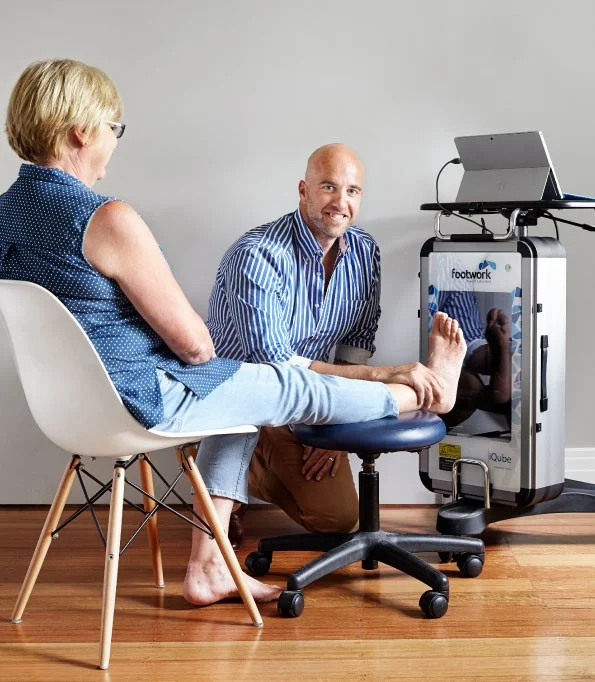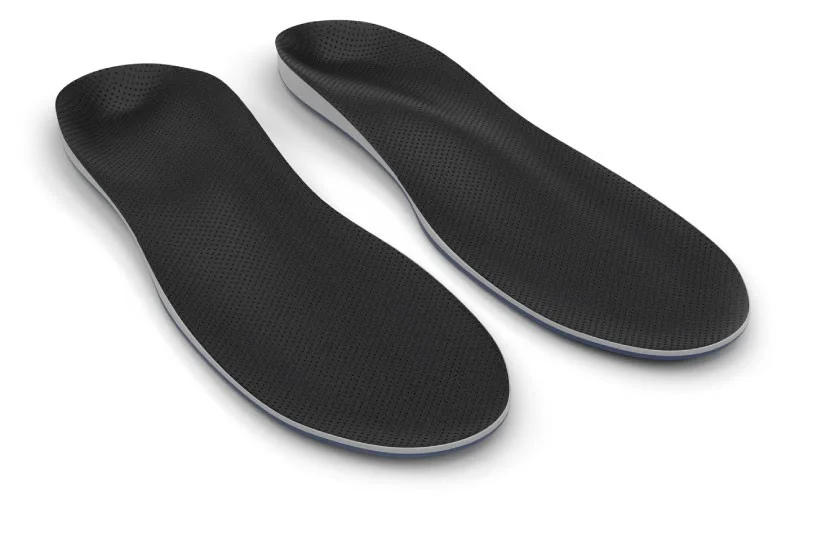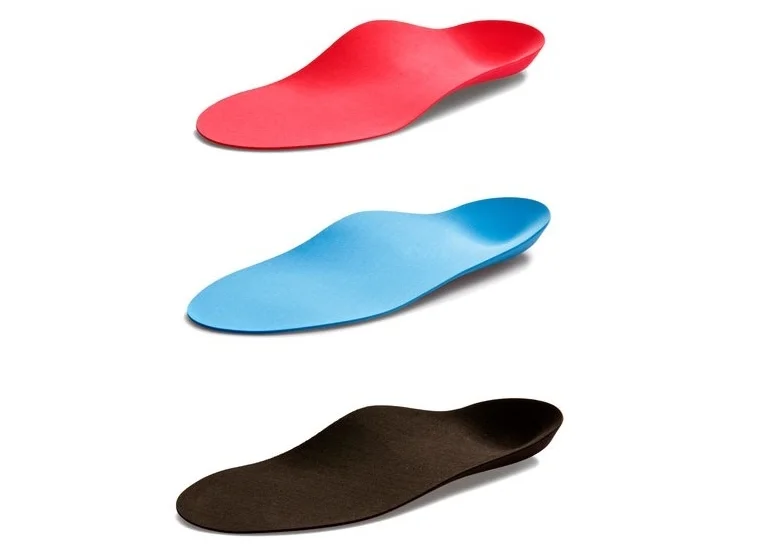Orthotics
Your foot bones make up a quarter of all the bones in your body!
What are orthotics?
Orthotics, or foot orthoses, are medical devices used within shoes. Most people think that orthotics work by improving the alignment of the lower limbs and feet — but this is not the case. Unfortunately some health practitioners still use orthotics to attempt to hold the feet in a ‘normal’ or ‘ideal’ alignment. This approach is far too simplistic and not supported by research. It fails to take into account that everyone is different! So, the exact way orthotics works is still unclear.
Recent research suggests orthotics can reduce pain by reducing the forces within the injured structures. Orthotics may also alter the alignment of the lower limbs and feet, but this isn’t necessary to reduce pain. It should also be noted that orthotics can be used to improve walking and running efficiency.
Do I need orthotics?
So, how do you know if you would benefit from orthotics? This is hard to work out yourself. Most people decide to start using orthotics because of their foot structure or the presence of pain. However, orthotics can end up being a waste of time and money when used inappropriately. For example, people often buy insoles from a pharmacy or shoe store, which typically apply support to the mid-foot region. But they’re usually too soft or don’t contour well enough to the feet to have a positive influence. They may also irritate and cause pain in the mid-foot region in people who have a low arch profile.
Podiatrists are orthotics experts
Podiatrists study biomechanics (the structure and function of the legs and feet) and orthotics for a minimum of 4 years. All of our podiatrists have a special interest in the use of orthotics for the prevention and management of foot and leg pain. We also regularly complete extra training to develop our knowledge and skills in this area.
We’ll consider your injury history (current and previous) and goals prior to thoroughly assessing your biomechanics to determine whether orthotics would be beneficial for you. If deemed to be appropriate, your podiatrist will then explain the pros and cons of each of the orthotics options available to you. You will never be pressured to proceed with getting orthotics. And while they may be an important component of a prevention or management plan, they should never be the only component.
Below you can see the pros and cons of each of the orthotics options available at Fairfield Podiatry.
Prefabricated Orthotics
Pros |
Cons |
|---|---|
| Several options available | Most options apply pressure (i.e. support) to the mid-foot region, which isn’t suitable for everyone |
| Can be issued on the day of your consultation | Usually do not contour to the feet as well as the custom-made options |
| Can be modified | Usually don’t fit in all shoes (e.g. may only fit in runners) |
| Good short/medium-term option | Shorter lifespan (e.g. 6 months – 2 years) |
| Least expensive option |
Semi-Custom-Made Orthotics
Pros |
Cons |
|---|---|
| Can choose to apply pressure (i.e. support) to the mid-foot region or rear-foot region | May not contour to the feet as well as custom-made orthotics |
| Usually contour to the feet better than prefabricated orthotics | Turnaround time |
| Can be modified more than prefabricated orthotics | Top covers may wear out and need to be replaced |
| More likely to fit in several shoes | |
| Longer lifespan due to being made from a more durable material | |
| Good medium/long-term option |
Custom-Made Orthotics
Pros |
Cons |
|---|---|
| Can choose to apply pressure (i.e. support) to the mid-foot region, rear-foot region or a combination | Turnaround time |
| Contour to the feet perfectly | Top covers may wear out and need to be replaced |
| Can be modified more than prefabricated and semi-custom-made orthotics | |
| More likely to fit in several shoes | |
| Longer lifespan due to being made from a more durable material | |
| Good long-term option |




